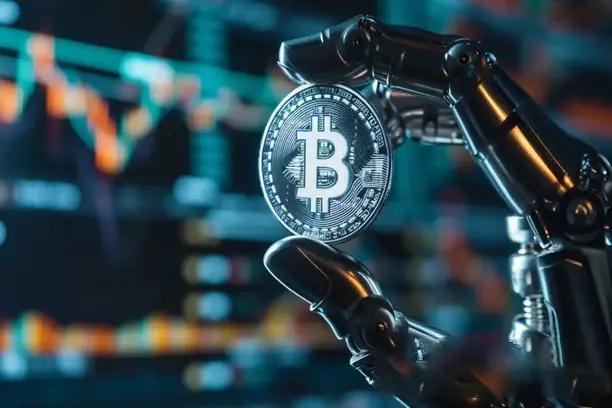How to determine whether a digital currency platform is legitimate? Detailed Explanation of Checking Methods
With the popularity of digital currency, numerous cryptocurrency trading platforms have emerged in the market. Not all platforms have legal and legitimate operating qualifications, and some may even be involved in fraud. How to determine whether a digital currency platform is legitimate or not has become an important skill that every investor must master. In this article, we will analyze the methods of determining whether a digital currency platform is legitimate or not, which will help you to be more cautious when choosing a trading platform and avoid encountering risks.

1. Enquire about the compliance and regulatory background of trading platforms
Step 1: Find out if the platform is regulated
Legitimate digital currency trading platforms are usually supervised by financial regulators in the relevant countries or regions. For example, virtual asset trading platforms in Hong Kong are subject to the regulations of the Hong Kong Monetary Authority, while those in the United States are regulated by organizations such as the Financial Crimes Enforcement Network (FinCEN). When choosing a platform, it is important to first check the platform's regulatory license, which is usually listed on the platform's website or "About Us" page. If the platform does not have clear regulatory information or provides false information, then the platform is relatively risky.
Step 2: Find the legality of the regulatory body
It is important to check not only the existence of the regulatory body claimed by the platform, but also the legitimacy of that body. You can check the official website of the regulator to see if the platform is within the scope of its license. If the platform claims to be regulated by a regulator but no information is available on the regulator's website, then this may be a warning sign.
2. inquire about the background of the founders and the team of the platform
Step 1: Understand the Founder's Background
Legitimate platforms usually disclose information about their founders and core team, and this information can be verified. The founder's experience and professional background can be found on social media and professional websites such as LinkedIn. If a platform's founder or team members are not available, or have a history of bad behavior behind them, then this is also something to be particularly wary of.
Step 2: Whether the team is open and transparent
If a platform's team list is hidden or unverifiable, it may be a sign that the platform is not transparent enough. Legitimate platforms usually update their team members on a regular basis and are somewhat open about their operations and development. A platform that hides the identity of its team members or provides only anonymous contact information may be more risky.
3. Assessment of the Platform's funding security measures
Step 1: Understand how funds are saved
Legitimate digital currency platforms will adopt a combination of cold wallets and hot wallets to protect the safety of users' funds. Cold wallets are wallets that are isolated from the Internet and can effectively avoid being hacked. Hot wallets are used to process daily transactions and allow users to access their funds. Checking whether a platform has a transparent mechanism for storing funds can help you understand the security of the platform.

Step 2: Check if the platform offers capital insurance
Some legitimate platforms offer funds insurance programs to protect users from losing their funds due to platform malfunctions or security breaches. Finding out if the platform offers such insurance services and checking the specific terms of the insurance policy can help improve your security.
4. Enquiry on the transparency and reputation of the Platform
Step 1: Reviews and User Feedback
For a proper digital currency platform, it should have good user feedback and high ratings. You can check the user reviews of the platform through third-party websites such as Trustpilot and Reddit. If the platform has a large number of negative reviews or users have reported problems with the platform, then the legitimacy of the platform is questionable.
Step 2: Check if the platform makes the audit report public
Some legitimate trading platforms regularly publish third-party audit reports to demonstrate the transparency and compliance of their funds. These reports provide information on the platform's capital reserves, trading volume, risk control, etc., so that users can trade with confidence. If a platform has never released a similar audit report or refuses to disclose the relevant information, this may be a sign that the platform is not compliant enough.
5. recognizing whether the platform provides the necessary risk warnings
Step 1: Does the platform have risk warnings
Legitimate digital currency trading platforms will clearly advise users of the risk of price fluctuations in the digital currency market and provide the necessary risk education. The platform should have a dedicated risk warning page so that users are aware of the potential risks before trading. If the platform does not clearly state the relevant risks or deliberately hides them, it may be trying to attract newcomers to high-risk trading, and such platforms are more risky.
Step 2: Availability of stop-loss and risk control tools
A legitimate platform will also provide risk control tools, such as stop-loss features and margin trading limits, to help users control their trading risks. If the platform does not have these basic risk control measures, then investors may face more uncertainty in the trading process.
6. Transparency of transaction fees and rebate mechanisms
Step 1: Understand the platform's fee structure
The fee structure of a legitimate platform is very transparent and clearly lists the fees, transaction fees, withdrawal fees, etc. Users should be able to easily find specific information about the fees before trading. Users should be able to easily find specific information about the fees before making a transaction. If a platform's fee structure is unclear or complicated, you should be wary of hidden fees or improper charges.
Step 2: Check the authenticity of the rebate or reward program
Some trading platforms may offer rebate or reward programs to attract users, but not all of these programs are actually enforceable. Some platforms may use high returns as a bait to attract users to inject funds, which is actually fraudulent behavior. Understanding the specific terms and conditions of a platform's rebate program and checking the experiences of other users can help you determine whether the platform is honest or not.
7. Whether the platform supports multiple trading methods and withdrawals
Step 1: Provide diversified trading options
Regular platforms will provide a variety of trading methods so that users can choose different trading pairs according to their needs, such as spot trading, futures trading, leveraged trading, etc. The platform should also support various payment methods, such as bank transfers, credit cards, cryptocurrencies, and so on. The platform should also support a variety of payment methods, such as bank transfers, credit cards, cryptocurrencies, and so on. If a platform only offers a single trading method, or has extremely limited payment options, then caution may be warranted.
Step 2: Check the ease of withdrawal
Legitimate digital currency platforms offer a convenient and fast withdrawal process and do not set unreasonable withdrawal limits. If the platform has frequent withdrawal problems, such as being unable to withdraw funds for long periods of time or requiring additional fees to withdraw funds, then this may be a typical feature of a fraudulent platform.
Conclusion
Choosing a proper digital currency trading platform is the first step to protect your money. Through the above methods, you can effectively judge the platform's compliance, transparency, security and other dimensions, so as to make a more informed choice. In cryptocurrency trading, caution is always the most important investment strategy, and choosing a legitimate platform will not only minimize risk, but also make your investment more stable.














